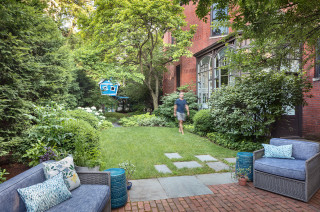
This article was originally published by a www.houzz.com . Read the Original article here. .

This article was originally published by a www.houzz.com . Read the Original article here. .
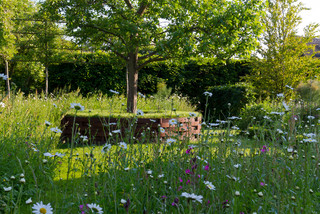
“Fertilizers, lime, manures and pesticides can suppress the regenerative powers of [landscapes],” says Guy Barter, chief horticulturist at the Royal Horticultural Society. Instead of using these elements, regenerative gardeners add plants such as cover crops, or “green manure,” which are fast-growing and can be mixed back into the soil; add clover and other legumes to supply nitrogen, a vital plant nutrient; and feed compost made from garden and kitchen waste to the soil organisms and plants.
“Regenerative gardening is about working with natural processes, not against them, taking a holistic approach to garden management to foster a healthy and thriving ecosystem,” landscape designer Harry Holding says. “From soil restoration and habitat provision to water management, it’s about looking at all the systems in the [landscape] and allowing them to link up to create a synergistic whole.”
Find a landscape designer or architect near you
This article was originally published by a www.houzz.com . Read the Original article here. .
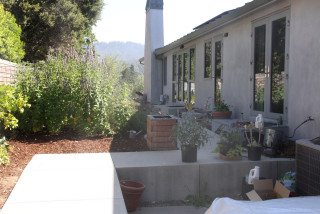
The new design has patios, seating areas, container gardens and more. “My clients love to entertain large groups, but [they] also wanted cozy spots for smaller groups to gather,” Howard says. She created outdoor rooms so guests could spread out during parties. New garden areas allow the homeowners to grow fresh flowers for parties, and herbs for garnishing homemade pizzas.
This article was originally published by a www.houzz.com . Read the Original article here. .

Adding a few plants to your yard is a great way to revitalize the space — and it doesn’t have to cost too much, says Wayne De Klijn, owner of AQL Landscape Design. When you’re choosing new plants, it’s important to pick a theme so the garden doesn’t look visually chaotic and disconnected, he says. De Klijn suggests choosing plants based on their region. “Or you might choose a theme based on color, such as all-white flowering plants,” he says.
It’s important to consider your region’s and backyard’s conditions when choosing plants. “The right plant in the right position will thrive,” Pezzimenti says. Soil preparation is also key. “Cultivate the soil before planting, and make sure it’s fluffy. This will give your new plants a great start,” he says.
The quality of plants you buy will also affect their success. “Be sure to purchase quality plants from a reputable nursery,” Pezzimenti says. “Check [that] the plant stock looks healthy and that roots are not pot-bound.” Prices for plants vary greatly; for an affordable option, purchase plants in seed form, cuttings, bulbs, tubes or small container sizes, he says.
Make Sure You Read This Before Buying New Plants
This article was originally published by a www.houzz.com . Read the Original article here. .
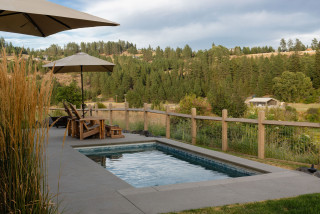
They also had to consider some less desirable critters. “There is a lot of wildlife and deer, so we had to plant things that the deer won’t chew on,” Barton says. Lavender and grasses were the team’s top picks.
Outdoor lighting, including tree lights, step lights and lights nestled among the boulders, highlight key features of the home exterior and landscape. Barton notes that the lights are especially welcome in winter, when the yard is more often enjoyed from inside. “It gets you excited for the holidays,” he says. “It’s nice to look out into the landscape and see that depth, and see that snow light up with the landscape lighting.”
This article was originally published by a www.houzz.com . Read the Original article here. .
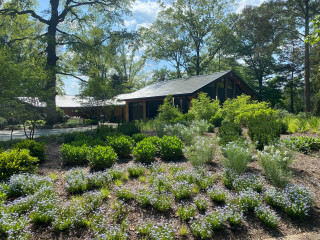
On this plan, the lake is at the top and the driveway is at the bottom. A rectangular paver path leads from the driveway to the entry. A grass path on the left leads to the lake-facing side of the house. Around the far side of the garage, on the right, is a bluestone path. Cutting gardens and edible plantings are represented by the boxes to the right of that path.
Toward the top of the plan, off the back of the house, is a large patio that overlooks the lake. The little nook on the left side of the patio is an art garden. There are two stepped paths leading from the patio down to the lake. The one on the left leads from the playroom down to a playground area. The one in the center leads down to the dock.
This article was originally published by a www.houzz.com . Read the Original article here. .

Like the black-and-white fabrics Bald picked for the furniture, Van Zandt went for contrast among the plantings. The hardscape around the large raised beds is a light pea gravel. The gravel beneath the trees is darker, larger, flatter and more compacted. There is steel edging between the different gravel beds and between the gravel beds and the lawn.
A trio of concrete globe sculptures adds curves to rectilinear beds. Bald “came up with creative ideas like adding these globes, and she picked some of the planters,” Van Zandt says. “She is so creative, and it was really great to be able to see one of the landscapes I worked on completely finished like this.”
Plant These Garden Favorites for a Taste of the Mediterranean
This article was originally published by a www.houzz.com . Read the Original article here. .

The landscape design includes smart features. “We used a Sonance sound system with two subwoofers and six speakers within the garden spaces, as well as speakers in the cabana that are controlled by a home automation system,” Stucchi says. “The landscape lights, the bistro lights and the lights in the cabana are all controlled by a Lutron system app on the homeowners’ phones.”
Paperbark maples (Acer griseum, USDA zones 4 to 8; find your zone), which are multistemmed trees with beautiful bark, frame the cabana. “About a million resident wild bunnies severely limited our plant palette with their insatiable appetites for herbaceous perennials. No amount of rabbit deterrent would help us there. We tried everything,” Stucchi says.
He used trees, flowering shrubs, evergreens and grasses for structure, color and texture. These include a mix of hydrangeas, ‘Karl Foerster’ feather reed grass (Calamagrostis x acutiflora ‘Karl Foerster’, zones 4 to 9) and both Blushing Knock Out roses (Rosa ‘Radyod’, zones 5 to 11) and Knock Out roses (Rosa ‘Radrazz’, zones 5 to 11).
This article was originally published by a www.houzz.com . Read the Original article here. .

Before Photo
3. Flat-Out Lovely
Yard at a Glance
Who lives here: A retired couple with children who have just moved out
Location: Harpenden, Hertfordshire, England
Size: 2,690-square-foot (250-square-meter) side yard on a one-third-acre property
Landscape designer: Henry Scott of Pehrsson Scott
Before: With a drop of almost 6½ feet from end to end, this part of a couple’s yard in southern England simply wasn’t usable. And below a newly added studio, a gap highlighted the unevenness of the terrain and made for an awkward entry. The couple tasked landscape designer Henry Scott, whom they found on Houzz, with turning the slope into an area where they could relax and entertain, and with better incorporating the studio.
This article was originally published by a www.houzz.com . Read the Original article here. .
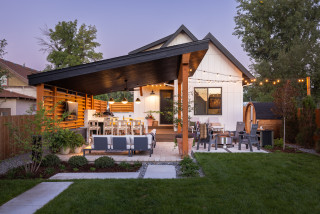
Yard at a Glance
Who lives here: A couple of empty nesters with two dogs
Location: Timnath, Colorado (near Fort Collins)
Size: 3,200 square feet (297 square meters); about 45 feet wide and 60 to 80 feet long
Landscape designer and builder: Lindgren Landscape, with Jamie McCarn as designer
The homeowners wanted a pergola or a covered structure for outdoor entertaining, but that was the extent of their vision. “We talked about enclosing it,” landscape designer Jamie McCarn says of the structure, “but we decided it was too small and we needed to keep everything open.”
They also opted for a substantial roof cover. With a pergola, “you can’t go out in the rain, and you don’t get that solid shade or interior feel. And I know that’s what [the homeowners] were going for,” McCarn says. She angled the roof to open up the look in the tight yard without losing any shelter or protection.
Stained Douglas fir wood beams and posts pop against the black-painted Douglas fir roof, anchoring the structure in the yard and complementing the home’s colors and details. “We never want the landscape to feel scabbed-on. It needs to feel cohesive with the house,” McCarn says.
Find a local landscape designer
This article was originally published by a www.houzz.com . Read the Original article here. .
“This is a shady garden and naturalistic play space. I wanted to add shade-tolerant plants with lots of textures and different-colored leaves,” Prassas says. “These include ferns, hostas, grasses and sumacs that make it more interesting for the kids. Another plant I included is witch hazel, which flowers when nothing else is flowering.” The witch hazel species he planted is Autumn Embers vernal witch hazel (Hamamelis vernalis ‘Autumn Embers’, zones 4 to 8).
Woody plants Passas added to the garden include ‘Little Henry’ Virginia sweetspire (Itea virginica ‘Little Henry’, zones 5 to 9), cutleaf staghorn sumac (Rhus typhina ‘Laciniata’, zones 3 to 8), Snowmound spirea (Spiraea nipponica ‘Snowmound’, zones 3 to 8), bottlebrush buckeye (Aesculus parviflora, zones 4 to 8) and a variety of hydrangeas.
How to Create a Beautiful Shade Garden